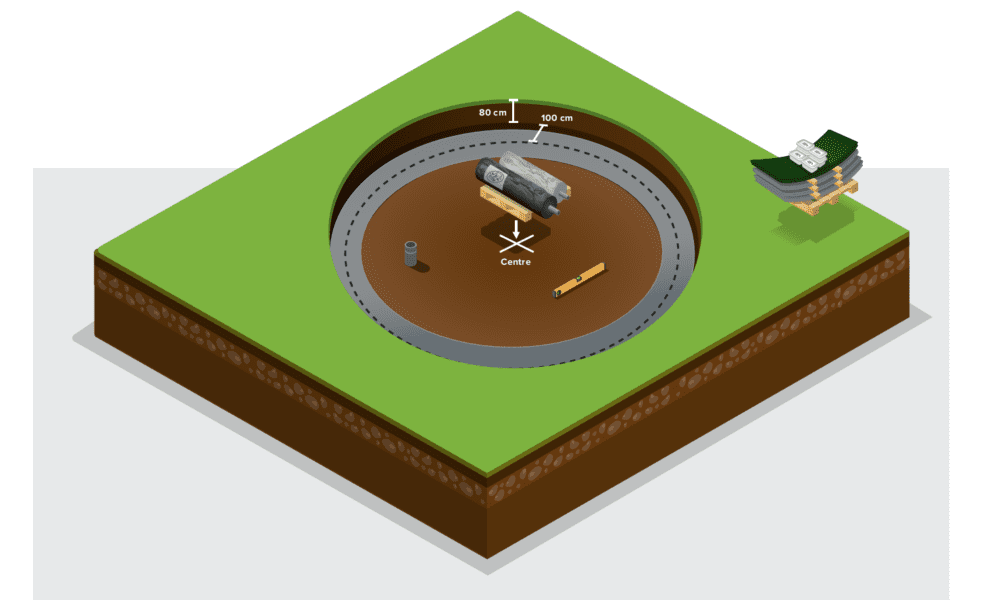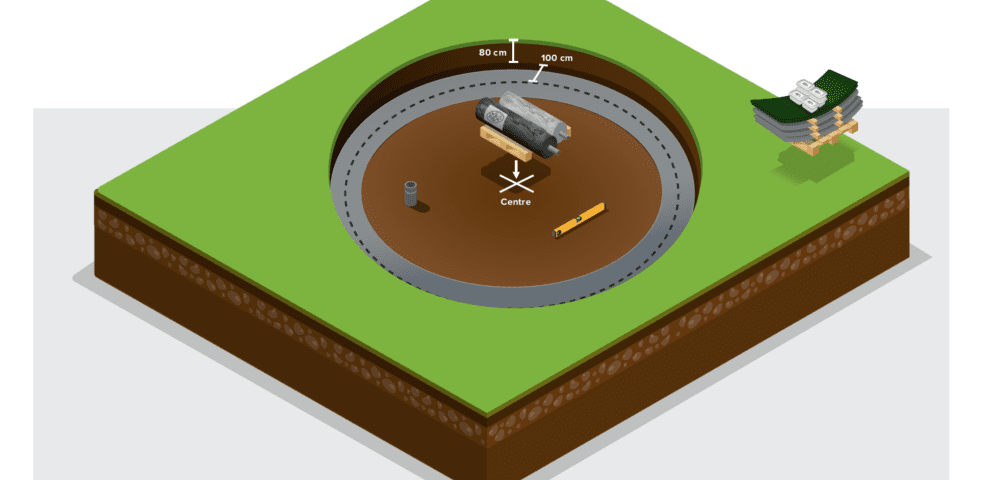All about the first and very essential step in constructing a water tank
Q&A on how to prepare your base for a water tank
Preparing your site and base is one of the most important steps in installing a water tank. Remember that every liter of water is one kilogram of weight, so your metal silo easily amounts to tonnes of weight.
In our latest installation instruction we explain in detail the first and very essential step in the construction process: digging in the basin. However, we love to share just a little more on this topic. We set up a short Q&A to provide more in-depth information about how to prepare the site for your water tank.

Q: A clear X mark is visible in the centre. Why is that?
A: The tank needs to be built in a perfect circle. In order to do so, you just take a piece of rope and check. If it is not a perfect circle, pressure can build up to one side and the liner will appear not to fit on one side.
Q: The infographic shows the liner materials placed inside the tank. Why?
A: Placing the liner materials inside the tank avoids struggling to get a 500 kg liner over a tank wall of three meters high, once put up.
Q: I see clearly the suggestion to place the tank in an excavated area. Why?
A: This is for additional wind stability. When the tank is empty, the steel shell is vulnerable to wind. It would not be the first tank to be blown away.
Q: The instruction says the diameter of the construction has to measure 1 meter more than the diameter of the basin. Why?
A: This 1 meter creates required working space.
Q: I read the basin should be dug 1 meter from the wall of the plant/green house or approximately 1,5 meter from a ditch. Why is this?
A: This distance is needed to create working space. It also creates stability and security.
Q: The instruction says the pitch should be covered by a layer of sand of minimal 10 centimetres. Why?
A: This layer prevents sharp objects in the soil coming through, such as branches, stones etc. The sand layer also gives the liner some extra space to settle.
Q: A concrete foundation is recommended. Why?
A: Tanks must be placed on a very solid, even and levelled surface. Concrete is by far the most apt material for this.
Q: The manual sets out the bottom ring of the basin must have an extra, durable coating on the outside. Why?
A: The coating gives an extra protection to the bottom ring. The bottom ring is the point where ground and air meet each other and is this is always a vulnerable area.
This Q&A was set up on the basis of our brand new installation instructions. We found out that many steps in the instruction are the same as 20 years ago. Why? These construction steps work, and there is no point in changing a winning team.
But why are we doing the things the way we do them? This question has at the same time trigged continuous product and installation improvement. We changed minor things in the order of installation and found more convenient installing materials.
Besides, this question also made us reflect and realize it is good to explain certain installation methods. Sometimes we are blinded by experience.
Soon we will be back with more installation tips and tricks.






